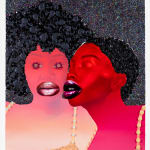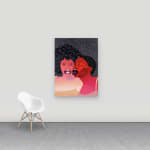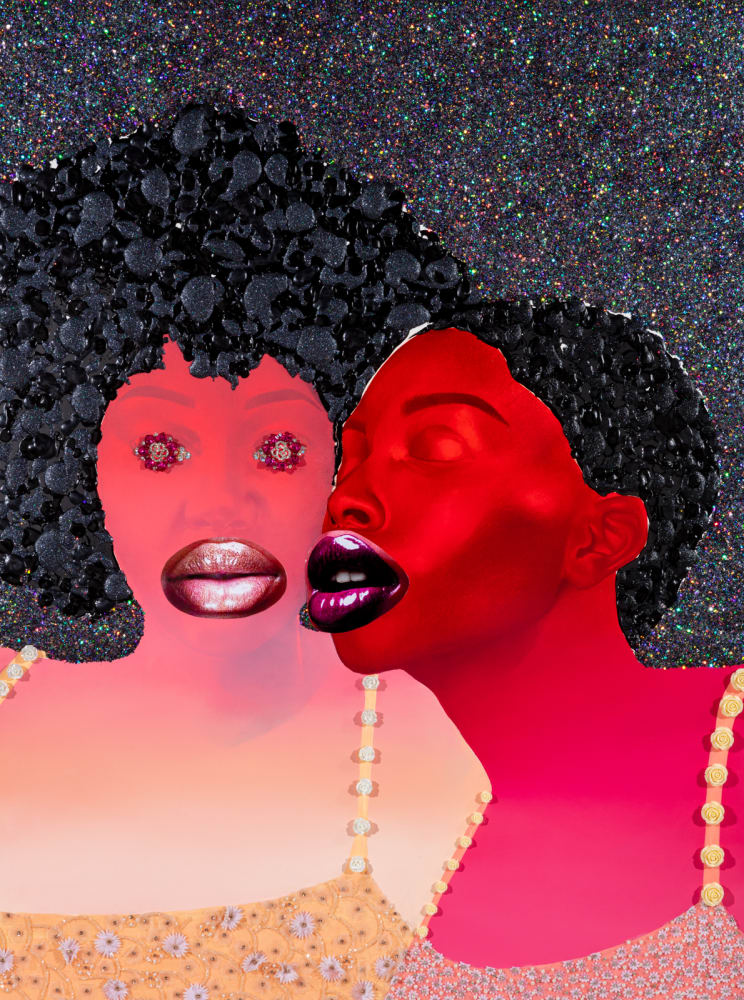Devan Shimoyama USA, b. 1989
121.9 x 91.4 x 3.2 cm
Further images
-
(View a larger image of thumbnail 1
)

-
(View a larger image of thumbnail 2
)

-
(View a larger image of thumbnail 3
)

-
(View a larger image of thumbnail 4
)

-
(View a larger image of thumbnail 5
)

-
(View a larger image of thumbnail 6
)

-
(View a larger image of thumbnail 7
)

-
(View a larger image of thumbnail 8
)

-
(View a larger image of thumbnail 9
)

-
(View a larger image of thumbnail 10
)

-
(View a larger image of thumbnail 11
)

Devan Shimoyama’s Waning Kiss portrays two figures, tenderly face to face, one with bejeweled eyes, the other with eyes closed. Shifting between translucent, softly painted surfaces and highly textured use of jewelry and glitter, the work suggests a layered, ever-transforming realm of mystery and metaphor. Titled Waning Kiss, the painting debuted in Shimoyama’s first European solo museum exhibition All The Rage, which opened in 2021 at Kunstpalais, Erlangen, Germany. The exhibition grew out of the artist’s examination of masculinity, vulnerability, and the right for people to self-define.
The image is connected to Shimoyama’s ongoing aesthetic exploration of alternative masculinity through adorned, fantastical images of the Black, queer, male body. Through the media of painting, sculpture, printmaking, and installation, Shimoyama presents figures that are perceived as both desirable and desirous. He is aware of the politics of queer culture, and the ways in which those politics relate to black American culture. These elements come together in his works in a way that is celebratory and also complicated. The celebratory aspects of Shimoyama's work come through in his choice of materials, which include fur, feathers, glitter and costume jewels. Many of the men in Shimoyama's works also literally have jewels in their eyes, endowing them with a mystified, often vacant expression, interrupting the connection between their inner selves and the viewer, and suggesting a sort of silent suffering. Many are also shedding tears.
“Mixed media allows me to be more direct,” he says. “A lot of the materials I use are ornate, bought at stores where you would buy couture gowns, or where drag queens might buy fabric to construct a fantasy. There’s content in those materials, specific to different memories and experiences and messages. I’m thinking about branding and culture and peacocking – how what you’re wearing reflects some kind of status of yourself. The materials reflect how I think about constructing identity, and possibly code switching from era to era.”











